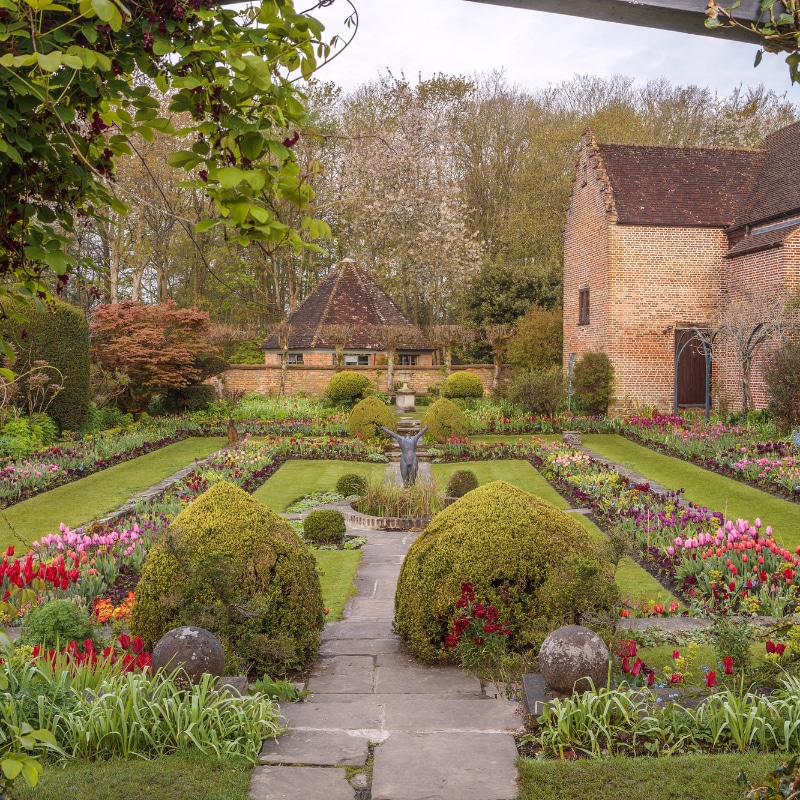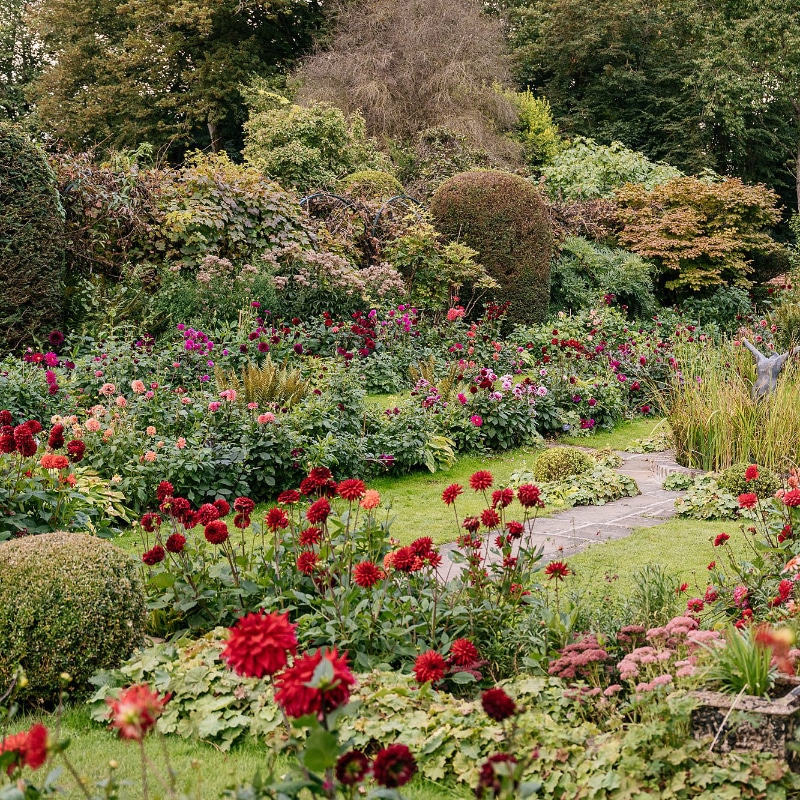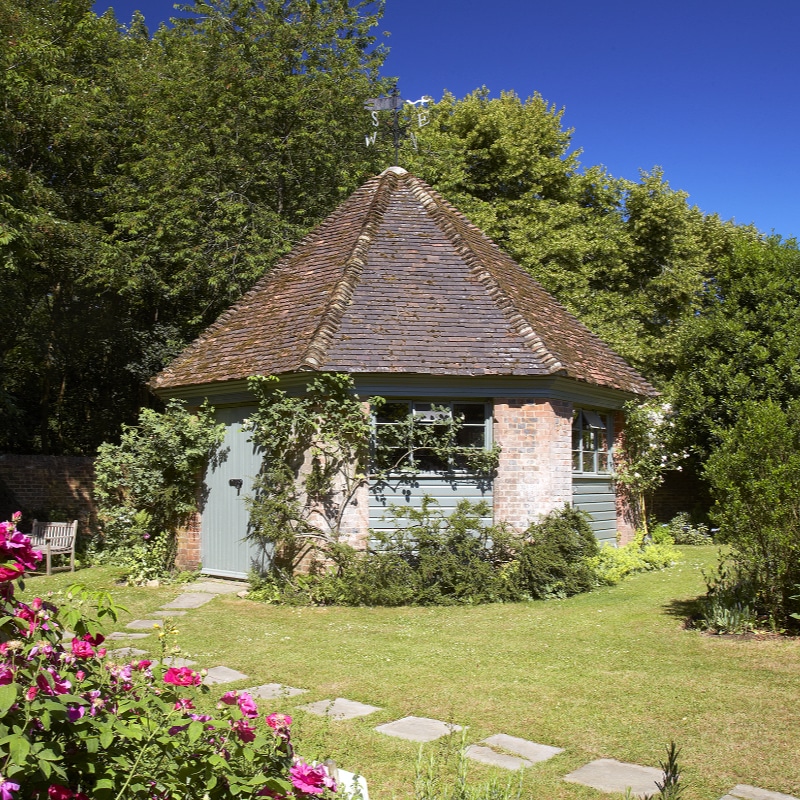When Elizabeth and Alastair Macleod Matthews first saw the Manor in 1954, they luckily were able to see beyond the toll that the war years had taken on both the house and the gardens.
Much of the grounds had been used for sheep pens and growing vegetables.
Wanting to restore the gardens to designs that would be sympathetic to the Tudor architecture, Elizabeth contacted Woburn to see if there were any archived plans of the garden when it was the principal home of the Russell family before they left for Woburn in 1627.
Fortunately the plans commissioned by Lucy Harrington 3rd Countess of Bedford, a patron of the arts and noted gardener, were discovered.
Elizabeth a talented and keen gardener herself, set to work creating the structure of the garden that you see today.
It is based on a series of rooms, each with its own distinct theme that was popular in Tudor times.
The formal garden extends to some five and a half acres and the box and yew topiary provide architectural shapes and a magical framework for the ever evolving seasonal planting.
Elizabeth became famous for her unique pairings and groupings of plants. In 2009, she was a well deserved winner of the Historic Houses Association and Christies Garden of the year.


Today the tradition has been continued by Boo and Charles Macleod Matthews. Boo, a former Jewellery designer, retrained in garden design.
With a great love of colour and shape, she creates the borders each year, always introducing new planting combinations.
Two key highlights of the gardens are the Tulip Festival in the Spring, and the Dahlia Festival from the end of August.
Many visitors enjoy at least two visits a year to the gardens to enjoy the evolving seasonal planting.
Chenies Manor is famous for Spring tulip displays. Showcasing new colours and varieties in both borders and containers. These are combined with myosotis and erysimums.
The Sunken Garden transforms into a tapestry of jewel like colours, as seen on the front cover of The English Garden in 2024. 2000 White Triumphator tulips planted with blue Myosotis gives a cool and classic air to the Rose Lawn.
The colour is continued in the garden with thousands of alliums, whilst the summer bedding of Cleome, Nicotiana, Heliotrope and Argyrantheumus, grown from cuttings, are planted out from early June.
These are joined by the stars of the show in late summer with the breathtaking displays of Dahlias.
Hundreds of different varieties are propagated to give continuous vibrant bursts of colour well into the Autumn. Boo, with her gardeners are always introducing new tubers and propagating old favourites.
They plan the mix of colours, shapes and sizes of blooms to create exciting new displays each year.
Walking down a long path edged with Nepita you will find the Kitchen Garden. This is planned with a practical and aesthetically pleasing potager.
Situated here are nursery beds where spring bedding is grown from seed over the winter. Rhubarb, Raspberry canes and pleached fruit trees surround the potager.
The Physic Garden, recreated in Mediaeval style, has herbs used both currently and in the past. The beds of herbs used for culinary, medicinal, poisons and dyes are all labelled with details and uses.
This is situated in a walled garden, hidden behind a secret door leading from a fragrant walkway of Clematis and Brant vine.
The garden is laid out around a medieval well from which a blindfold pony pumped the villagers’ water.
The Physic Garden is also home to the new stumpery, created to attract wildlife.


The Parterre features a romantic white ornamental metal gazebo, which hosts many a summer wedding.
Crisply cut yew cones and urns planted with Astelias give an architectural elegant quality.
While to the right, the large yew maze dominates the lawn. This was created as a result of a 1991 Sunday Times competition.
Deceptively simple, it is set out in an icosahedron geometric pattern of equilateral triangles, and featured over 50 triangles.
This takes time to keep clipped and in shape.
The White Garden comprises seasonal billowy planting of cream, greens and whites and is surrounded by large yew topiary birds and white flowering shrubs.
This is set off by Pete Moorhouse's dramatic sculpture, Four Arcs, which takes its inspiration from the forms found in nature.
As you sip tea and eat homemade cake in this tranquil setting it is hard to believe that it was once a hotbed of royal adultery and political treachery.
